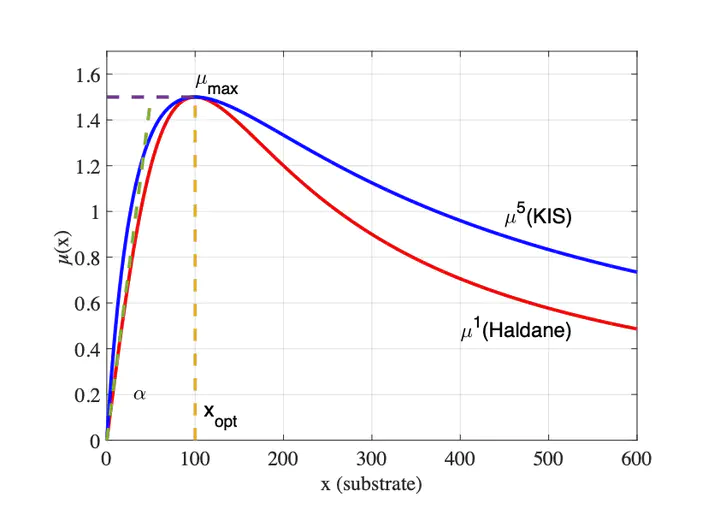 Growth rate with two-parameter and three-parameter models
Growth rate with two-parameter and three-parameter modelsAbstract
This article focuses on the practical application of the Haldane model in studying microbial growth, a critical aspect in various industrial and environmental contexts. We examined four existing descriptions of the Haldane model in the literature, and introduced an additional description based on only two parameters. We investigated the interrelations among these five descriptions in the context of photoinhibited microalgae growth rate. Using state-of-the-art model identification technique, we carried out sensitivity analyses on each parameter across all descriptions. Furthermore, we introduced a novel criterion to account for the model accuracy in the selection of the most suitable description. Using experimental data from literature on response to irradiance, we determined the parameter values for each description and for each data set. The correlation between each parameter is discussed. When parameters within a description exhibit strong correlations, they convey similar information, rendering the description less efficient. The sensitivity analysis, combined with an upgrade of the Akaike information criterion (AICc) and Bayesian information criterion (BIC), identified our two-parameter description as the optimal choice for representing microalgae growth rate in response to irradiance variations. Importantly, the novel information criterion, namely PEMAC, outperforms traditional criteria such as AICc and BIC in distinguishing between equivalent descriptions. This work illustrates the hidden complexity in inhibition models and end up with a wise recommendation for the modelling of inhibition: ‘Keep It Simple (KIS)’.